It is possible that you inherited a collection of old slides from a relative who passed away. Or you just have a bunch of old slides lying around and are looking for a way to access these family memories.
You may even be – just like myself – the crazy one that still uses slide film to shoot photos (and actually uses some of them as product photos on this website). Whatever brought you here, please read on.
Nowadays people often are dismissive when it comes to the old analog tech like diapositives. But when they experience those images the way they were meant to be seen, they are always surprised. They expect boring poor quality images their grandpa shot with his ancient camera that nobody knows how to use anymore (no touchscreen?). Instead, they get good quality, colorful, beautiful photography with plenty of character.
If you are looking for ways to use your collection of slides, the Sawyers Bi-lens 35 can provide you with a very enjoyable, novel and social way to experience slides.
The slides viewed through this device are nothing like photos viewed on a mobile phone’s screen. They are nothing like projected slides either – due to the peculiar pseudo-3d effect it creates – so it makes sense to get the Bi-lens 35 even if you own a slide projector.
It is also worth pointing out that due to its size the device is way more portable than a projector.
The Sawyer’s bi-lens 35 will easily beat digital scans done with professional scanners, simply because it shows you originals. Even the best scan will be just a copy.
So give those old memories a chance to shine again.
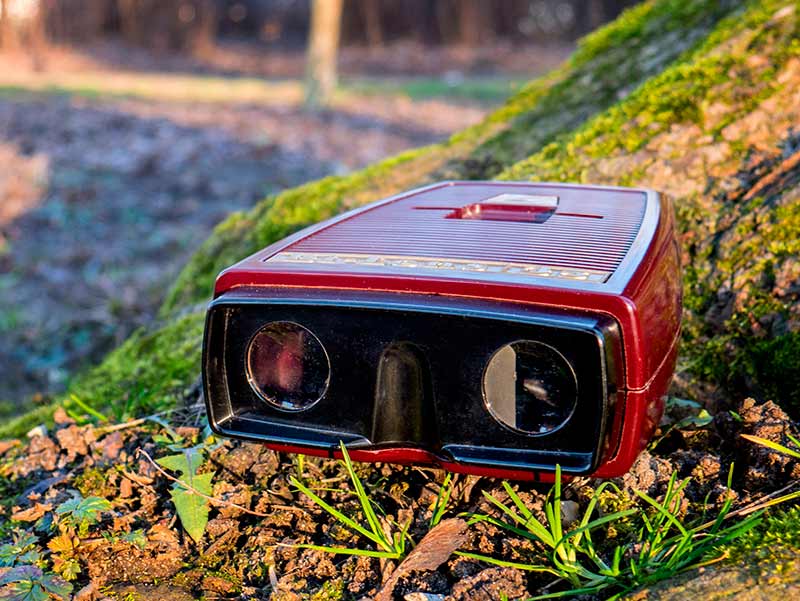
Sawyers bi-lens 35 is a quite unique slide viewing device. It takes standard ordinary 35 mm slides even though it looks like a 3d or stereoscopic slide viewer. Actually it may be the only device of this kind that has ever been manufactured.
All binocular style slide viewers normally take some kind of a double slide image – be it reels or stereo slide mounts. This one is different as it takes ordinary 35mm slides that were shot with any standard and unmodified 35 mm film camera.
In order to view the slides properly you need to look as if you were looking at a large projector screen located in a distance. You will feel that your eyes are focusing way further than the actual slide is located. For majority of users this comes perfectly naturally and is not a problem.
The surprises do not end here. Another interesting thing about this device is the image it produces. I think Sawyers were trying to pull off two things – a pseudo-3d image out of a single slide and focus at infinity that is natural and does not put strain on your eyes. They actually succeeded to some degree.
The Sawyers Company
To begin with it would be worth saying who Sawyers were as they are long gone. It would show to you that they were a real deal and a big innovators for their time.
Sawyer’s were founded in 1914 in Oregon in the USA. The company was in some way the 3d imaging technology pioneer as they invented 3d stereoscopic slide viewer called Viewmaster.
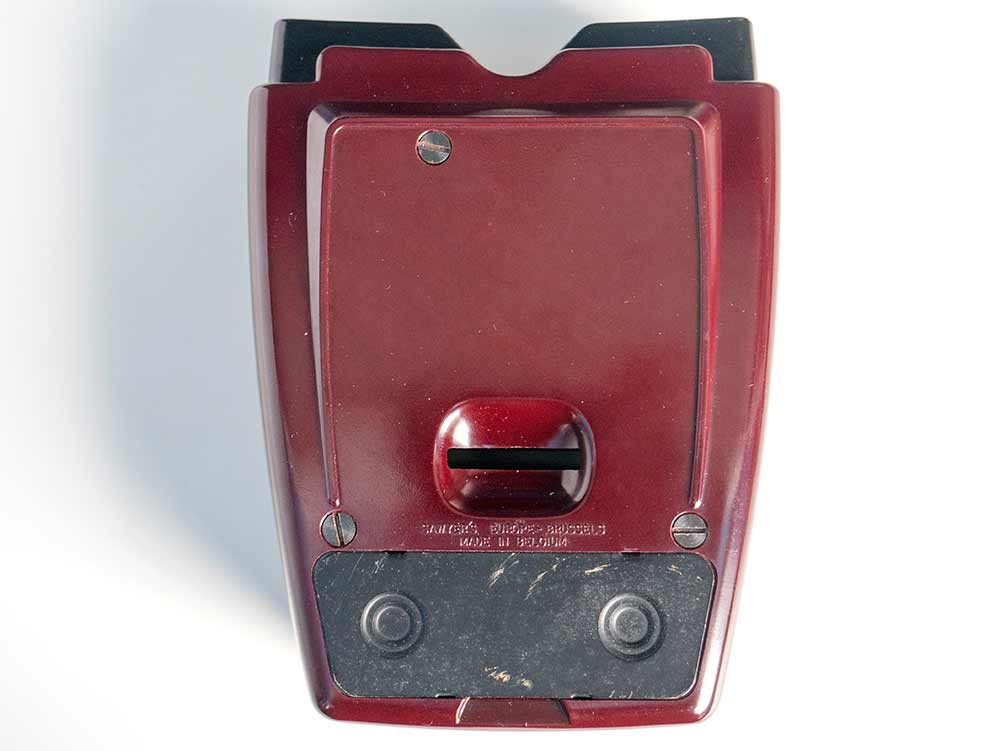
The viewmaster took circular reels of slides. These reels were sold as fancy postcards to show various places, events etc – I am sure a lot of people still collect these reels today.
Today’s Virtual Reality devices operate on the very same principle as the Sawyer’s Viewmaster did – displaying separate image filmed or rendered at different angle for each eye. Sawyers managed to build a very successful business on top of this technology.
Sawyer’s mainly made slide viewers, projectors and other slide related devices including their own stereoscopic cameras.
In the 1950-ties a 3d photography boom happened triggered by introduction of David White’s Stereo Realist camera. During these times a lot of companies jumped on the 3d bandwagon. A lot or research was done in the field of 3d photography and movie technology. Even though it is not a 3d viewer, I am sure a lot of the knowledge acquired during these times pushed Sawyers to try and create the pseudo 3d style of viewing the Bi-lens 35 has.
At some point Sawyers were acquired by another company called GAF. If you are interested in slide photography this name definitely should ring a bell.
While you will encounter many slide viewing devices branded GAF, the company continued to use Sawyer’s brand too.
Unfortunately GAF shut down in 1977 having peaked at well over a thousand of employees a number of manufacturing plants worldwide.
So as you can see Sawyer’s were no joke and they were serious innovators in their time too.

Usage
Basic usage is very simple – you put your batteries in, you put your slide in and look through the lenses while pressing the button on the top of the device. Remember to look in a way mentioned earlier, focus further away.
The device takes both standard 3mm thick slides as well as thin 1.9mm reflecta CS system ones. Both types stay well in place, do not wobble and do not cause any problems.
The batteries are standard LR14 type that are easy to get. To insert batteries open small metal flap on the bottom of the viewer and put them in – there are markings showing what way to put the batteries in. You close the flap and you are ready to go.
It is quite possible that you put the batteries in, press the button and nothing happens. The bulb may be gone or the elements that make contact with batteries need to be cleaned.
Keep in mind that these things were manufactured over 40 years ago. They may have spent a few decades in someone’s damp basement. Unless you bought the device from someone who took good care of it, it will need a good clean.
Cleaning
To clean the device you need to undo 3 screws on the back and it will come apart easily. If you ever tried to fix any of the contemporary, deliberately hard to open and fix devices then you will appreciate this simplicity.
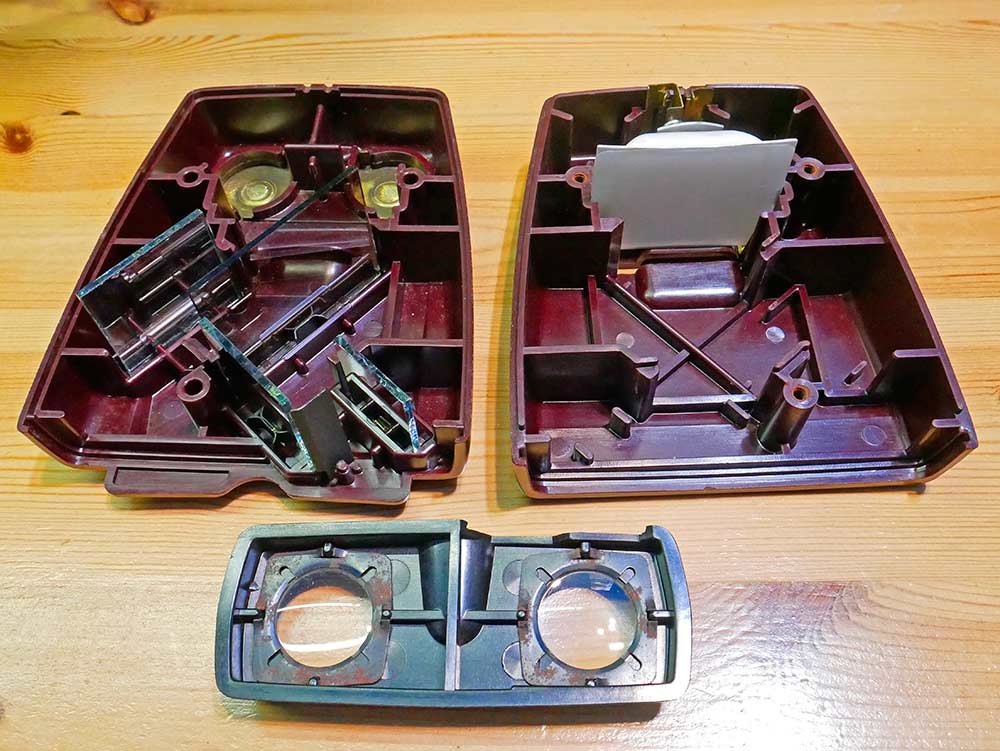
As you can see inside there is a funny system of mirrors, some of which are semi-transparent.
This optical setup creates the illusion of distance and the pseudo 3d effect.
Examine the battery contacts and clean them with sandpaper if there is a need to do so – especially if the light does not turn on. If this does not help, the bulb may need to be replaced.
Use canned air to remove dust from the device. Clean lenses and mirrors with a cloth suitable for glasses or camera lenses.
Put the cover back together, fasten the 3 screws. Your Sawyer’s bi-lens 35 should be as good as new and – when the time comes – ready to be handed down the generations along with your collection of slides.
Replacing the Light Bulb
Sawyers Bi-lens uses standard E10 3v light bulb. I would say you can use higher voltage ones too. Bulb location shown below:
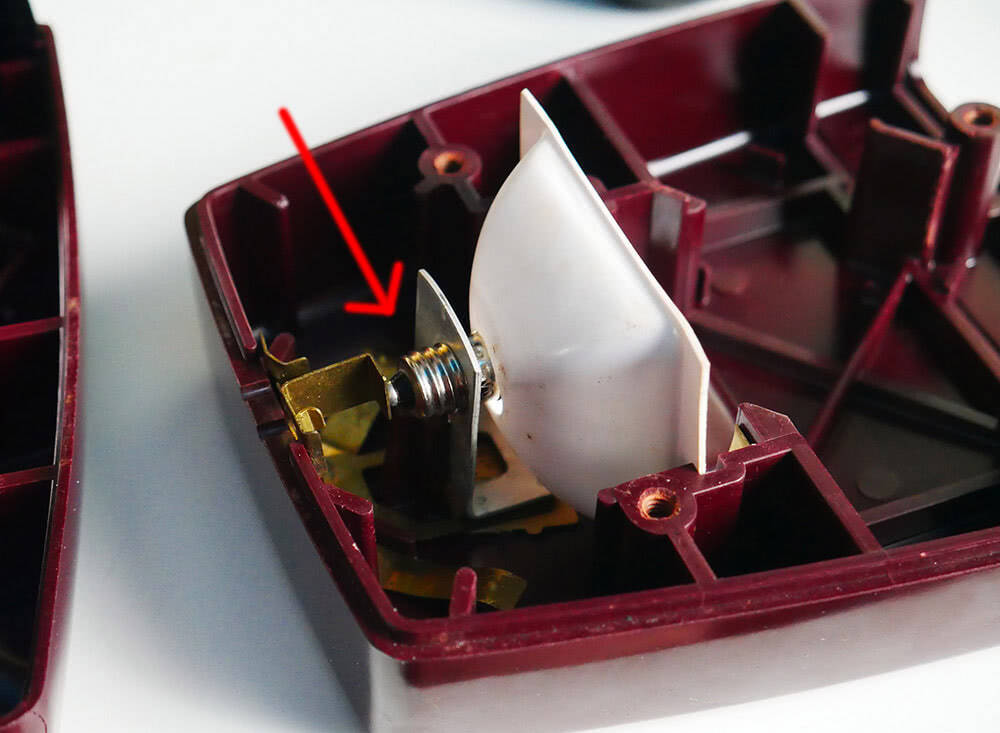
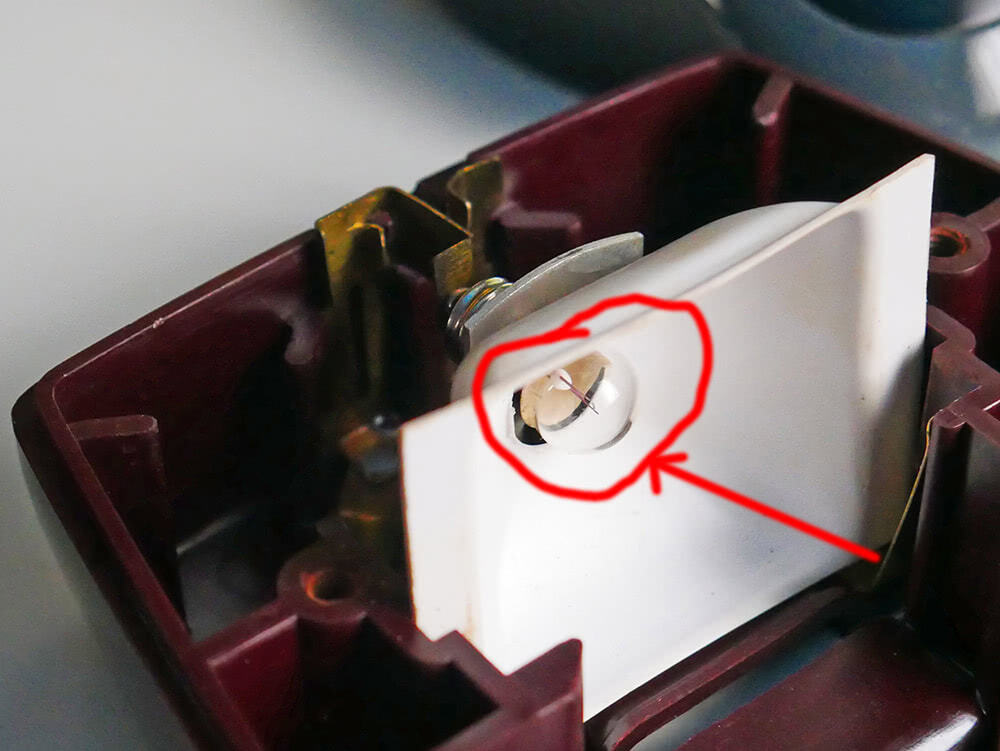
DIY Project Potential
If you are into DIY you can easily spot a project opportunity here. Just adapt the device to use brighter and more energy efficient led light. It can be done easily using bulbs that replace standard E10 bulb used by Bi-Lens with a led. There are such bulbs on sale and they give much brighter light. The improvement is immediate.
Throw in a potentiometer and you got yourself light intensity control without complicated electronic involved.
If you are into Arduino then sky is the limit. You can use RGB leds to control light intensity and temperature. You can give the device a cool little display. You can make it charge from USB. I have done such a project recently on Paterson’s medium format slide viewer.
Putting a display where the slide goes gives you a super cool handheld gaming device. I am really surprised why the Arduino community has not discovered the old slide viewers yet. They can be easily adapted to become something completely different. Or to be way better slide viewers.
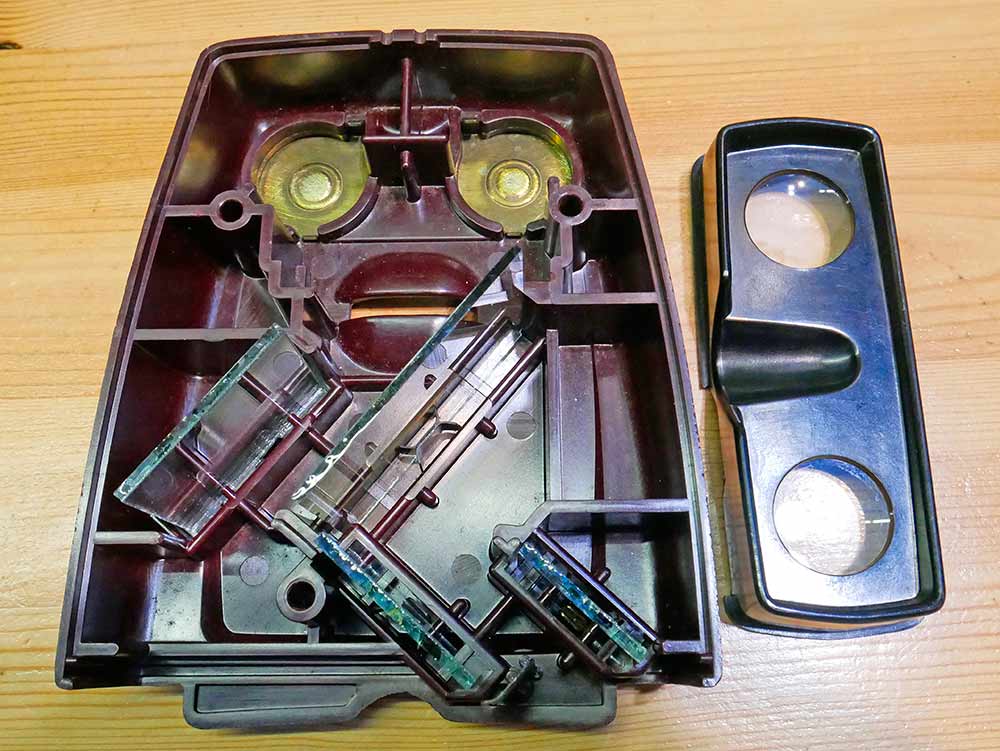
Image Quality
The image viewed through Sawyer’s bi-lens is not what you would expect. It appears to be further away, it looks more like a large screen in a distance, thus the need to focus your eyes in a distance.
I am not sure if this is intentional or just a byproduct of the distance illusion, but the image has a weird pseudo 3d effect to it. The image in right eye is sharp and normal, but the image in the left eye consists of multiple transparent reflections placed on top of one another in varying intensity.
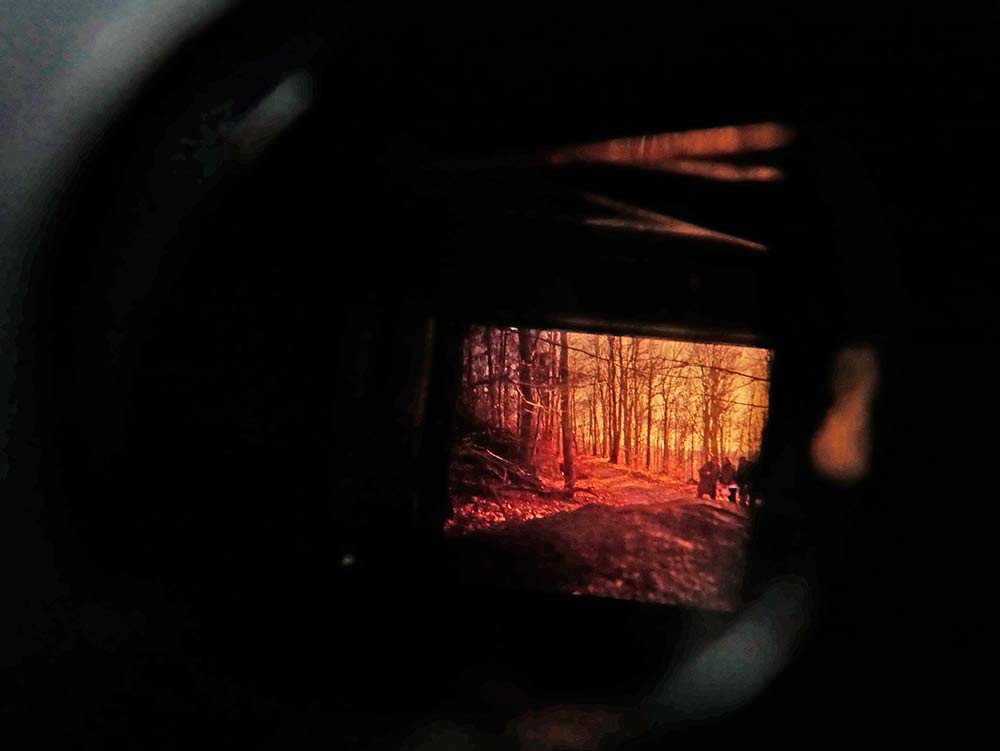
This variation creates 3d illusion effect. This effect tends to be working quite well for landscapes and images where the center of interest or main object is further away.
It tends not work so well for portraits and slides showing closeups.
I think that overall this pseudo 3d effect makes the image more interesting and that the image is better off with it than it would be without it. So the effects makes the experience more positive and surprising.
The overall quality of the image this device manages to pull off just with a bulb, few lenses and mirrors is truly remarkable. It is a real pleasure to watch these pixel-less images through the Sawyer’s bi-lens viewer.
Build Quality
The device is very well built. The design is beautiful. It feels substantial in hand to the point that if you use it for longer time it may start feeling a bit too heavy.
It is mostly made of bakelite. Bakelite is the first synthetic plastic material patented back in 1909. There is a cool article about it on wikipedia. I’ll just quote one sentence from it: “The retro appeal of old Bakelite products has made them collectible”. So here you have your first collectible (and also perfectly usable) bakelite object.
The shell is hard and honestly way harder than it needs to be. No wonder these viewers survived so many years with very little signs of deterioration. Bear in mind Sawyers/GAF shut down in 1977 – so your viewer must be over 40 years old – at the very least.
The ergonomics are ok and there is not too many annoying things when using the device. It does not fit your face perfectly well but I do not think it was meant to.
It is comfortable to hold in your hands and is intuitive to use.
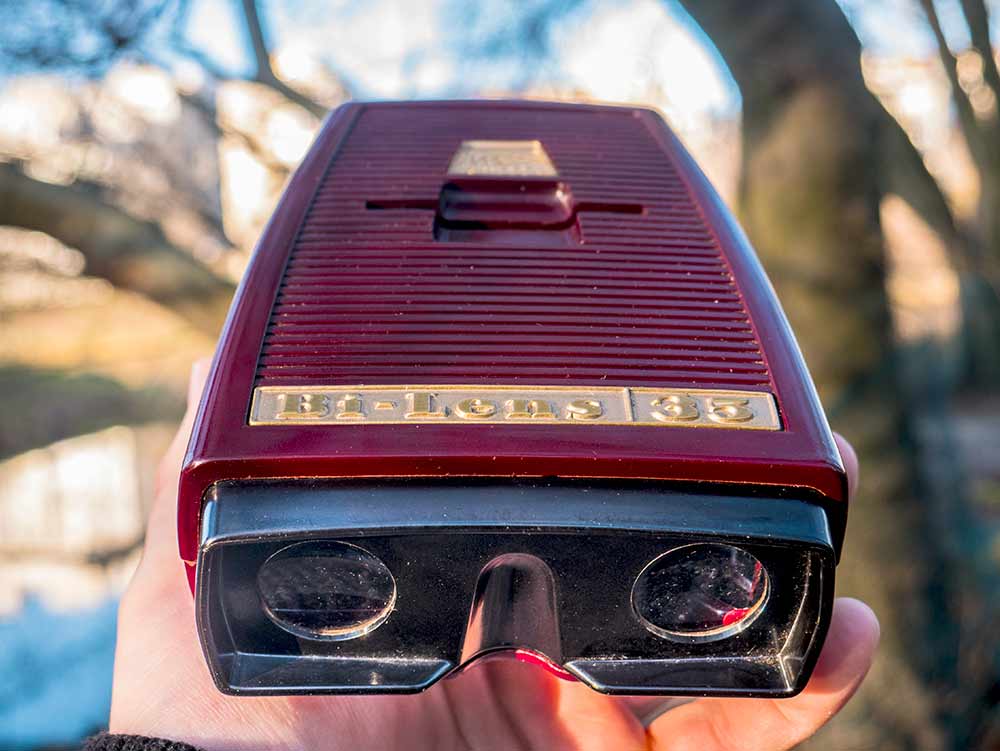
What I am missing are some kind of flaps on the sides to shelter from external light and provide more immersive experience in brightly lit places. You can’t cover the sides with your hands as you need to press the light switch button with one hand.
I am sure that with a tiny bit of DIY you can make the light come on when the slide is inserted and solve the problem this way.
This is a minor thing though and not an issue in darker environment.
There is no problem using this viewer while wearing glasses. If you wear glasses just for computer (or generaly close distance) only you may simply not need them due to device’s own lens system. This was my personal experience.
The Box
My viewer came in beautifully weathered box but unfortunately with no manual that could certainly make for an interesting read. The state the box is in does show the age of the device and conditions it had been stored in for a long time.
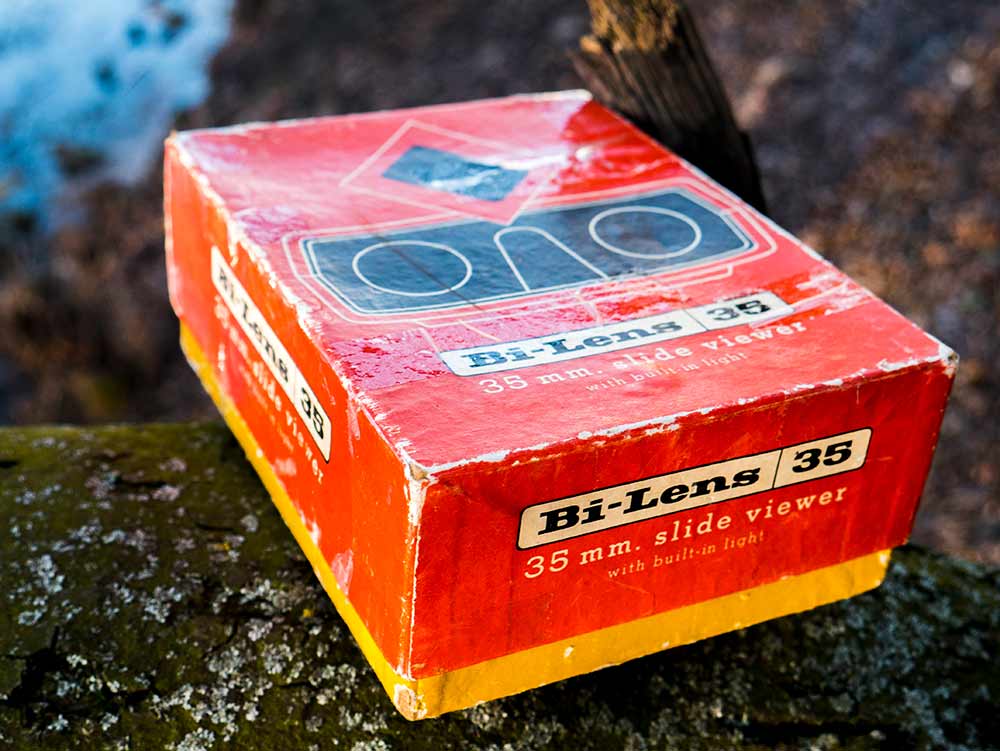
Availability and prices
As you can imagine Sawyer’s bi-lens 35 can be bought used only. The availability in the USA is far better than in Europe. You can get them in Europe too, mostly devices that were manufactured in Sawyer’s plant located in Belgium. As with everything if you can wait you will get a better deal (around 25 euro/30 bucks) if you can’t – you will have to pay more. They do come up for sale quite frequently.
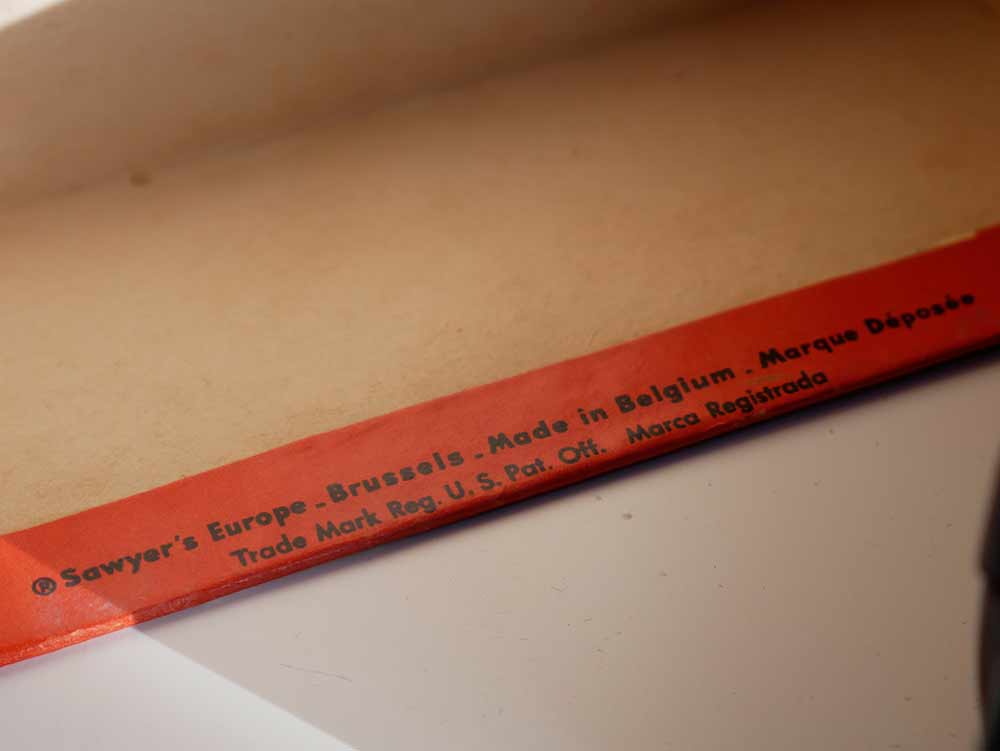
Final word
The Sawyer’s bi-lens 35 is a beautiful, interesting and fully functional device. It produces outstanding image using both old and new slides.
I love the design and the fact that despite it’s age it lost so little of it’s appeal. Out of the box it makes a perfect Fallout game series prop and a nice collectible item if you are into this sort of retro-futuristic aesthetics.
In my opinion it provides more interesting experience than simple table viewers. It provides a perfect way to experience your family’s memories as well as your own modern slides.
Analog photography enthusiasts will have an opportunity to show their creative work to family and friends as this unusual way of experiencing it will certainly make them interested.
Viewed through this device slides beat any old family photos and are more interesting than recent photos shot and viewed on a mobile phone.
I really enjoy viewing both my own modern slides and old family ones through this device and I am sure you will too.
If you can get one – definitely do and keep both slide photography art and your family’s memories alive.


